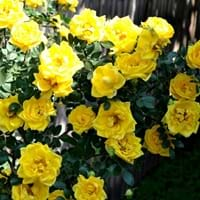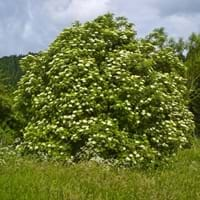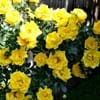Life Span
Perennial
Perennial
Type
Perennial
Flowering Plants, Fruits, Herbs, Shrubs
Origin
Eastern Europe, Western Asia
Australia, South America
Types
Rosa Harisons Yellow, Rosa Persica
Adams Elderberry, Black Beauty Elderberry, Black Lace Elderberry, Johns Elderberry, Nova Elderberry
Habitat
gardens, Pastures, Prairies, Terrestrial, Tropical regions
Farms, Homesteads, Near organic waste disposal
USDA Hardiness Zone
3-8
4-8
Sunset Zone
1a, 1b, 2a, 2b, 3a, 3b, 4, 5, 6, 7, 8, 9, 10, 11, 12, 13, 14, 15, 16, 17, 18, 19, 20, 21, 22, 23, 24
2a, 2b, 3a, 3b, 4, 5, 6, 7, 14, 15, 16, 17
Habit
Oval or Rounded
Upright/Erect
Flower Color
Yellow
White
Flower Color Modifier
Not Available
Not Available
Fruit Color
Non Fruiting Plant
Purple, Red
Leaf Color in Spring
Not Available
Green
Leaf Color in Summer
Not Available
Green
Leaf Color in Fall
Not Available
Yellow green
Leaf Color in Winter
Light Green
Not Available
Leaf Shape
Pinnate
Compound
Plant Season
Summer, Fall
Early Spring
Sunlight
Full Sun, Partial Sun
Full Sun, Part sun
Type of Soil
Loam, Sand
Loamy, Sandy, Well drained
The pH of Soil
Acidic, Neutral
Slightly Acidic
Soil Drainage
Well drained
Average
Bloom Time
Early Summer, Summer, Late Summer, Early Fall
Early Spring, Spring
Tolerances
Drought
Pollution
Where to Plant?
Ground, Pot
Ground
How to Plant?
Grafting, Stem Planting, Transplanting
Grafting, Seedlings
Plant Maintenance
Medium
Medium
Watering Requirements
Form a Soil ring to water efficiently, Requires regular watering, Water twice a day in the initial period, Water when soil is dry
Requires regular watering, Use Mulches to help prevent water loss during hot and windy weather
In Summer
Lots of watering
Lots of watering
In Spring
Moderate
Moderate
In Winter
Average Water
Average Water
Soil pH
Acidic, Neutral
Slightly Acidic
Soil Type
Loam, Sand
Loamy, Sandy, Well drained
Soil Drainage Capacity
Well drained
Average
Sun Exposure
Full Sun, Partial Sun
Full Sun, Part sun
Pruning
Prune if you want to improve plant shape, Remove damaged leaves, Remove dead leaves, Remove deadheads, Shape and thin as needed
Cut or pinch the stems, No pruning needed in the early stages, Prune for shortening long shoots, Prune if you want to improve plant shape, Prune in winter, Prune ocassionally, Remove deadheads
Fertilizers
All-Purpose Liquid Fertilizer, organic fertlizers
All-Purpose Liquid Fertilizer
Pests and Diseases
Aphids, Bacterial Diseases, Mites, Slugs
Canker, Leaf spot, Powdery mildew, Stem spot, Tomato Ringspot Virus
Plant Tolerance
Drought
Drought
Flower Petal Number
Not Available
Single
Edible Fruit
Not Available
No
Foliage Texture
Not Available
Medium
Foliage Sheen
Not Available
Matte
Attracts
Not Available
Birds
Allergy
no allergic reactions
Diarrhea, Nausea, Vomiting
Aesthetic Uses
Beautification, Bouquets
Not Used For Aesthetic Purpose
Beauty Benefits
Not Available
Not Available
Environmental Uses
Air purification
Air purification
Medicinal Uses
No Medicinal Use
constipation, Fever, Heart problems, High cholestrol, HIV/AIDS, Nerve pain, swine flu
Part of Plant Used
Flowers
Flowers, Fruits
Other Uses
Showy Purposes, Used as Ornamental plant
Not Available
Used As Indoor Plant
No
No
Used As Outdoor Plant
Yes
Yes
Garden Design
Container, Cutflower, Feature Plant, Foundation, Mixed Border
Not Available
Botanical Name
Rosa foetida
Sambucus nigra
Common Name
Austrian briar, Persian yellow rose, Austrian copper rose
Elderberry
In Hindi
Persian Yellow Rose
Elderberry
In German
Persian Yellow Rose
Holunderbeere
In French
Persian Yellow Rose
Sureau
In Spanish
Persian Yellow Rose
Saúco
In Greek
Persian Yellow Rose
Elderberry
In Portuguese
Persian Yellow Rose
Sabugueiro
In Polish
Persian Yellow Rose
Bez czarny
In Latin
Persian Yellow Rose
Elderberry
Phylum
Not Available
Magnoliophyta
Class
Not Available
Magnoliopsida
Family
Rosaceae
Adoxaceae
Clade
Angiosperms, Eudicots, Rosids
Angiosperms, Asterids, Eudicots
Tribe
Not Available
Not Available
Subfamily
Rosoideae
Not Available
Number of Species
Not Available
Importance of Persian Yellow Rose and Elderberry
Want to have the most appropriate plant for your garden? You might want to know the importance of Persian Yellow Rose and Elderberry. Basically, these two plants vary in many aspects. Compare Persian Yellow Rose and Elderberry as they differ in many characteristics such as their life, care, benefits, facts, etc. Every gardener must at least have the slightest clue about the plants he wants to plant in his garden. Compare their benefits, which differ in many ways like facts and uses. The medicinal use of Persian Yellow Rose is No Medicinal Use whereas of Elderberry is constipation, Fever, Heart problems, High cholestrol, HIV/AIDS, Nerve pain and swine flu. Persian Yellow Rose has beauty benefits as follows: Not Available while Elderberry has beauty benefits as follows: Not Available.
Compare Facts of Persian Yellow Rose vs Elderberry
How to choose the best garden plant for your garden depending upon its facts? Here garden plant comparison will help you to solve this query. Compare the facts of Persian Yellow Rose vs Elderberry and know which one to choose. As garden plants have benefits and other uses, allergy is also a major drawback of plants for some people. Allergic reactions of Persian Yellow Rose are no allergic reactions whereas of Elderberry have Diarrhea, Nausea and Vomiting respectively. Having a fruit bearing plant in your garden can be a plus point of your garden. Persian Yellow Rose has showy fruits and Elderberry has no showy fruits. Also Persian Yellow Rose is not flowering and Elderberry is flowering. You can compare Persian Yellow Rose and Elderberry facts and facts of other plants too.





